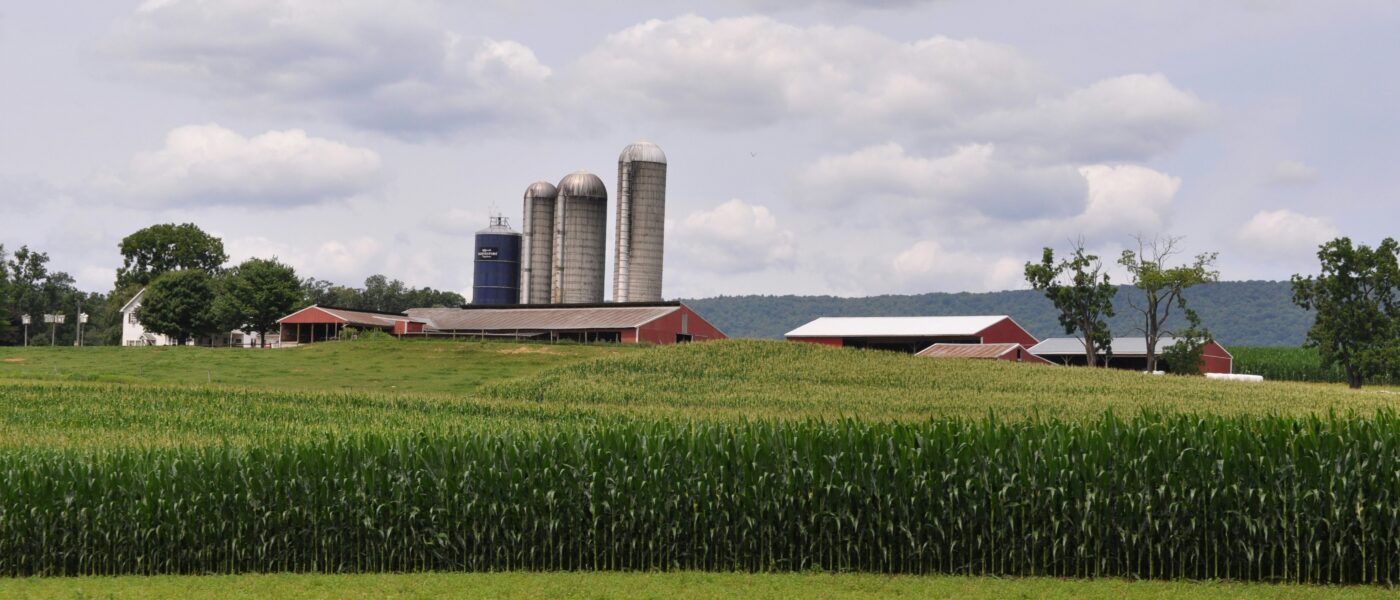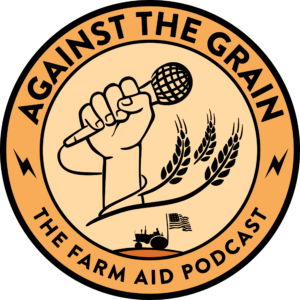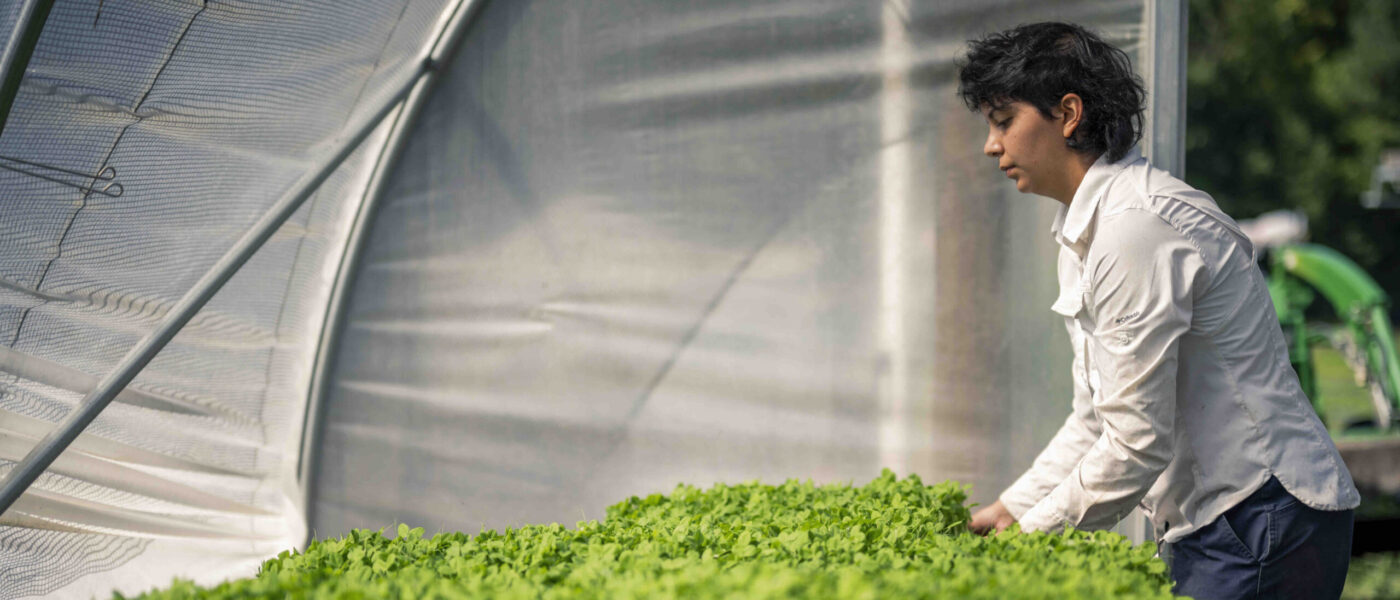Talk of tariffs has been all over the news lately. But what really is going on and what does it mean for farmers? Read on to learn the hows and whys of tariff policy and what farmers have to say about them.
What are tariffs and how do they work?
Stripped back from policy and political implications, tariffs are a tax on imports. They are used as a trade barrier to make imported goods artificially more expensive than goods produced domestically. So a company importing a good to the U.S. would pay a tariff to the U.S. Customs and Border Protection agency. The cost that a company pays to import a good is then (most often) passed on to consumers in the form of higher prices for that good.
The benefits and drawbacks of tariffs are complicated to untangle. Since tariffs are a tax, they can increase government revenue and domestic industries may benefit from reduced international competition. Policymakers use tariffs as a way to alter the market by deterring companies from importing foreign-made goods, with the goal of finding domestic alternatives instead.
Experts and farmers alike are in agreement that tariffs can be beneficial in certain scenarios when used strategically. For example, they can be used to protect consumers (as in with meat produced by countries that have lower food safety standards), to protect domestic labor, or to protect emergent industries or industries that are important to national security. However, if tariffs are not coupled with policy (such as labor protections), tariffs are not likely to achieve goals by themselves.
Both consumers and companies face higher prices for goods under tariffs; individuals pay more for foreign-made products, while businesses must pay more to produce goods that are made with imported components. Long term, increased prices may lead to a higher demand for government support as consumers are left with less disposable income and rely more heavily on public services.
What’s going on with tariffs right now?
On April 9, President Trump announced tariff rates for countries around the world ranging from ten to fifty percent, and varying country to country. Shortly after, he said he would lift these rates until July 9, to give countries time to negotiate individually with the United States.
As of May 29, 2025, there is a blanket tariff on all imported goods of ten percent, excepted for goods registered under the North American Free Trade Agreement (NAFTA) from Mexico and Canada. An additional tariff of approximately 30 percent on all imported goods from China is currently in effect. It remains unclear how or if tariff rates will change in July.
As a response to the Trump administration’s tariffs on goods imported to the U.S., some foreign countries began imposing their own tariffs on U.S. exports. As of now, tariffs on U.S. exports are also on hold, awaiting the U.S. government’s next move. The nature of these flip-flopping policies makes it hard for manufacturers and farmers to map out future business plans. This has caused great unpredictability in economic markets and threatens to provoke a global trade war.
What do tariffs mean for food and agriculture?
Tariffs will hit the agriculture industry particularly hard, as the U.S. is a major exporter of agricultural products and a net importer of agricultural inputs. On the whole, it will be more expensive to produce agricultural products and selling them abroad will be more difficult.
Because agriculture is often a target for retaliatory tariffs by other countries, soy, corn and pork – major exports of the U.S.– tend to be impacted by trade policy that enacts tariffs. For instance, the U.S. sells more soybeans to China than any other product, by value (about $12.8 billion worth in 2024). In response to recent tariffs on Chinese imports, China has imposed a tariff on the U.S. This means that the amount of soybeans sold to China will decrease as it finds more affordable alternative sources of soybeans, most notably Brazil, where it has already established a close relationship following the last round of tariffs during President Trump’s first term.
The tariffs will touch more than just soybeans, however. Current tariffs will affect all types of farm inputs, from fertilizers to farm equipment and machinery such as tractors and combines because even machinery manufactured in the U.S. is often made with foreign components. Consequently, tariffs will increase farmers’ production costs, further squeezing already tight profit margins. These tariffs come at a time when other support to farmers has been cut, stable and reliable export markets through the USAID program have been eliminated and federal funds have been frozen, creating an atmosphere of uncertainty.
It’s also worth noting that some agricultural products can’t be made in the U.S., such as regionally produced specialty foods (think cheeses, meats and wines) as well as products that don’t grow in the U.S., like bananas. Also, the key element of fertilizer, potash, comes from Canada. When all is said and done, tariffs will make importing food and food costs for consumers generally more expensive.
How are President Trump’s tariffs affecting farmers?
A broad impact of tariffs is the uncertainty they are causing; for example, the day before the Trump Administration’s tariffs were set to go into effect in April, large questions remained unanswered, including which tariffs were to be enacted and at what rate. This lack of transparency and a coherent strategy has created uncertainty for farmers whose businesses require months of advance planning. The current tariffs were announced after farmers had started their growing seasons, making it impossible to pivot to domestic markets.
Not all farmers are reacting negatively to the announced tariffs. Shrimp farmers in Louisiana welcome the new tariffs and believe that they will reduce the amount of imported shrimp from countries like Ecuador and Vietnam, giving a leg-up to domestic shrimp farmers who don’t sell internationally.
What do farmers think?
Farm Aid spoke with several farmers in the major agricultural state of Iowa to get their take on the tariffs.
Josh Manske, Algona, Iowa
Josh, whose family farms corn and soybeans in Iowa, explained that most of the soybeans he and his fellow Iowa farmers grow has historically been exported to China, as well as to Mexico and countries in Southeast Asia. A portion of the corn they grow is also exported. “Corn growers … have spent years and years developing good relations and trade missions to numerous countries in order to get into those markets and they’ve ended with essentially a snap of a finger. Those relationships have been fissured.”
“People not directly in the field, they feel when farmers are struggling, as do all our rural communities… agriculture reverberates throughout the entire economy.”
The tariffs aggravated an already tough farm economy. Josh described how a slow down late last year necessitated government emergency assistance payments and said, “We were already in a recession and this will just exacerbate the problem.” He expressed how people who aren’t directly affected by tariffs will still feel their effects. “People not directly in the field, they feel when farmers are struggling, as do all our rural communities… agriculture reverberates throughout the entire economy.”
Aaron Lehman, Polk County, Iowa – Iowa Farmers Union President
Aaron Lehman is a fifth generation farmer whose family has been farming in Iowa for over one-hundred and fifty years. He grows corn, soybeans, oats and hay on about five-hundred acres and says the recent tariffs are affecting his operation.
“Long-term, the buyers of our products see us as unreliable trading partners and look to buy from farmers in other parts of the world. In many cases, those buyers from five years ago (the last trade war) never came back to farmers in this country, as they found more reliable markets in other countries.”
“Immediately when we got the news about tariffs, the prices we received for our crops dropped – just in the past twenty-four hours – by almost five percent,” Aaron said. “This has a devastating impact on our farm in the short term, but also in the long run. We will need to find ways to tighten our belts just to stay in business. For us that means cutting back on necessary farm maintenance and improvements and also trying to find ways to finance the farm with a smaller cash flow. Lending terms become stiffer as our creditors look to protect their lending position on the farm. Our local farm input suppliers will start cutting employees as farmers are forced to purchase less. And of course, this makes bringing the next generation onto the farm even harder and in some cases delays those decisions.”
Aaron notes that these tariffs will lead to a loss of global trading partners: “Long-term, the buyers of our products see us as unreliable trading partners and look to buy from farmers in other parts of the world. In many cases, those buyers from five years ago (the last trade war) never came back to farmers in this country, as they found more reliable markets in other countries,” said Aaron. “In the meantime, real trade issues continue to go unaddressed. Real concerns about currency manipulation, labor and safety standard differences, labeling requirements and other important concerns are still left unaddressed by this trade war. This hurts farmers and laborers here and ultimately will mean higher prices and less reliable food supplies for consumers as a result.”

Farmer, John Gilbert.
John Gilbert, Hardin County, Iowa
John Gilbert is a farmer in north central Iowa who runs a diversified grain and livestock farm with his family. John said, “Every farmer I know gets the most satisfaction out of producing and raising something with the understanding and hope we’ll be able to make enough from the market to stay in business and support our families.” John predicted the price of his inputs will increase, as will consolidation and corporate concentration, which will lead to higher prices for consumers. “As a farmer, I have to be worried about how well the consumer can afford my product, particularly when we’re in the business of selling premium meat products.”
“As a farmer, I have to be worried about how well the consumer can afford my product, particularly when we’re in the business of selling premium meat products.”
Ultimately, he’s thinking about the consequences of these tariffs more than the policies or causes of them: “I think there’s a lot of people who, you know, can tell you the sky is falling, but I guess I’m more concerned about who’s going to get hurt when the sky falls.”
Matt Russell, Lacona, Iowa – former State Executive Director of the USDA Farm Service Agency in Iowa
Matt Russell is a fifth generation farmer who has spent his entire life farming in Iowa. He grew up on a thousand-acre, commodity farm with corn, soybeans, hogs and cattle. Since 2005, he’s farmed with his husband Patrick Standley at Coyote Run Farm, focusing on specialty crops and beef and eggs at a smaller scale. As he approaches retirement, he’s pivoted into ecosystem services – using National Resources Conservation Service (NRCS) programs to preserve wildlife habitat and improve water quality on the land.
“We participate in the agriculture and rural economy and there’s a ripple effect; when there’s a downturn in the agriculture economy, it affects all farmers, regardless of what you’re growing. There is no upside: No one in our rural communities is immune from the impact of these decisions.”
The way that Matt currently runs the farm, protects him from the tariffs. However, he was quick to point out that doesn’t mean he won’t be impacted. “We participate in the agriculture and rural economy and there’s a ripple effect; when there’s a downturn in the agriculture economy, it affects all farmers, regardless of what you’re growing. There is no upside: No one in our rural communities is immune from the impact of these decisions.”
He’s critical of the way that trade policy is being implemented: “Tariffs are a tool; they can be used strategically and correctly. If you are using them in ways that aren’t any of that, you’re not leveling the playing field, it’s just destruction. Anyone who thinks that these tariffs are being used strategically is using magical thinking.”
What comes next?
If the goal of tariffs is to boost domestic production, there is a better approach to tariffs than the current one, like targeting products, not countries, and increasing investment in local food systems. While some proponents of the current tariff policy argue this is an opportunity to promote local food sovereignty, opponents point out that goal would require a coordinated change in domestic agriculture policy and can’t be done with trade alone – especially given broad tariffs have been coupled with cuts and monetary freezes to programs supporting local food economies.
We’ve been here before: In 2018, tariffs imposed on China resulted in a trade war that hurt U.S. farmers and required $61 billion of federal relief. This time around it’s unclear if the Trump administration will bail out farmers with the government’s current cuts to funding, as well as federal staff reductions that will make it hard to administer aid. In any scenario, assistance has tended to be disproportionately focused on large commodity operations. Right now, the only certainty is that the uncertainty from current and future tariffs will negatively impact farmers and our entire food system.

 Listen to an episode of our podcast, Against the Grain, to hear from our hotline operators about their firsthand experience answering disaster calls.
Listen to an episode of our podcast, Against the Grain, to hear from our hotline operators about their firsthand experience answering disaster calls.


